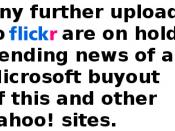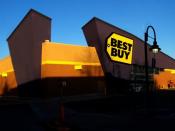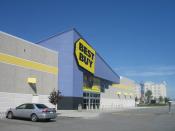On December 16, 1999, Best Buy Co. Inc and Microsoft formed a long-term alliance called ?comprehensive strategic alliance?.
The existence of the complementary sales and distribution channels between those two parties was the main driving force of the alliance. According to Best Buy Chairman and CEO Richard M. Schulze, ?A deciding factor in forming this alliance is Microsoft?s ?Everyday Web? vision, making the web as prevalent as the telephone and even more useful in our customer?s daily lives.? (Roger Yu, 1999). Microsoft wanted to increase its customer base and narrow the gap with the ISP market leader American Online. Best buy, as the nation?s largest volume retailer of consumer electronics, computers, entertainment software and appliances, has the resources to help MSN to achieve its ?Everyday Web? vision. Under the alliance, Best Buy would promote Microsoft Network (MSN) through in-store instant rebates to new computer purchasers, and sell other Microsoft Digital products in its more than 350 electronics and office stores in 37 states.
On the other side, Microsoft?s expertise on internet was needed by Best Buy to build up its own website BestBuy.com. ?Best Buy and BestBuy.com will receive ?prominent and preferred placement? across Microsoft sites.?(PR Newswire, 1999).
The strategy the two companies were pursuing was Quasi-Integration. The companies involved in this alliance, Best Buy and Microsoft are two closely related companies as far as their products, customers and distribution channels. Best Buy sells consumer electronics, computers and entertainment software, and Microsoft provides MSN and various software. Those are all in or besides the IT field. The same customer group attracts both of their attention. Furthermore, Best Buy owns several hundred stores all over the country. The same distribution network can be utilized by Microsoft to sell its own products. On the other hand, Microsoft has its websites with very large volume of visiting rate, including msn.com, hotmail.com, expedia.com and so on. That is what Best Buy can take advantage of. A small poster on the Hotmail.com homepage might generate a significant amount of revenue increase for Best Buy.
Five days before the alliance announcement or formation (December 9th, 1999), Best Buy?s stock price per share was $43.75. It went up more than five dollars and reached $50.44 at the time when the alliance occurred on December 16th, 1999. For the same time period, Microsoft?s stock price had gone up more than $20 per share from $92.75 to $113.69. On March 16, 2000, three months after the alliance, the stock price per share for Best Buy was $74.50, however, Microsoft?s stock price went down to $95.38. Microsoft formed interactive TV alliance with NDS Group On March 7th and its stock price went up more than $8 in the following three days. On March 14th, Best Buy and Micro formed what they called ?Store-Within-A-Store? alliance and its stock price went up more than $11 in the following three days. On April 14, 2000, the two parties finalized the alliance.
REFERENCES: 1. Business Wire, 2000, Best Buy Finalize Strategic Alliance With Microsoft, April 14, <<http: //web.lexis-nexis.com/universe/document?> 2. Roger Yu, 1999, Best Buy and Microsoft signb marketing deal Software maker to buy 2 percent stake in retailer, December 17, 3. Dow Jones Business News, 2000, Best Buy, Micro Electronics Lauch ?Store-Within ?A-Store? Alliance, March 14, 4. Peter Thal Larsen, 2000, Best Buy, Micro Electronics Lauch ?Store-Within ?A-Store? Alliance, March 14, 5. Yahoo Finance. 2002. April 11.




